Diseases of fruit trees, their signs and treatment
Laying an orchard and caring for it requires a lot of time and knowledge of agricultural technology. Sometimes it takes a whole life to set up a garden, and diseases of fruit trees can destroy it overnight. If the treatment is not organized in time, the gardener will lose the entire harvest of fruits.
Pathogenic microorganisms are activated when favorable conditions for their life and reproduction come. In addition to weather conditions, this may be the weakness of the fruit tree after the winter or the presence of wounds on the trunk. It is easy to notice the spread of the disease if you look closely at the tree, observe its condition during the growing season. An attentive gardener will quickly identify the disease by its characteristic symptoms and take the necessary treatment measures.
Content:
- Why do fruit trees get sick?
- The main diseases, their signs
- How and with what to treat trees?
- Disease prevention measures
Why do fruit trees get sick?
There are several reasons for the occurrence of diseases in fruit trees:
- Mechanical violation of the integrity of the branches, the trunk of a tree leads to the fact that the infection easily penetrates inside, causing serious pathology. Damage occurs to the main parts of the tree in winter during heavy snowfalls or glaciation of branches. In summer, dents are knocked out on the trunk with hail. Strong hurricane winds cause significant damage to garden trees. Rodents and hares in winter feast on juicy bark, leaving non-healing wounds on the trunk. And a person, not carefully pruning or harvesting, breaks branches, damages stems, bark.
- Burns caused by the sun are dangerous for fruit crops. Ultraviolet rays actively act on the trunk and shoots in early spring and hot summer, in winter. The orchard in areas with a cold climate is experiencing hard frosts. Low temperatures kill the bark, cambium layer. Sometimes it gets damaged and root system, wood, leading to the destruction of the relationship between underground and aboveground parts of the plant. Sudden temperature changes from low at night to high during the day lead to the fact that the buds and young leaves die.
- For the full development of fruits, the tree needs a large amount of moisture, which it receives from the soil. If the percentage of moisture decreases, then the plant grows old, dries up. Excess water leads to oxygen starvation of the root system, a decrease in immunity, and diseases. It is important to pay attention to the waterloggedness of the site, the level of groundwater. For different horticultural crops, it ranges from one and a half or two meters to the surface of the earth.
- A variety of insect pests leads to a violation of the integrity of leaves, fruits, buds, inhibition of the growth and development of trees.
- The ratio of nutrients in the soil gives stability to horticultural crops, increases their productivity. Their deficiency is associated with stunting, reddening of shoots, leaves, crushing of fruits. Excess fertilizers make plants susceptible to diseases, inhibit their growth, and reduce yields.
A responsible and competent gardener will not allow the causes of diseases of fruit crops to appear, he will correctly carry out technological methods of growing trees.
The main diseases, their signs
What diseases can affect trees:
- Scab is considered one of the dangerous diseases of apple trees. Its symptoms are more pronounced during periods of wet summer. Not only precipitation, but also abundant dew at night enhances the germination of fungal spores on fruits and leaves. Pathology is determined by the brownish-green spot formed on the leaves and stems. The spots have a vague shape, over time they become covered with a velvety bloom. Affected by scab apple trees and pears develop slowly, bloom poorly, and can freeze in winter. They bear fruit with affected dots with apples and pears.
- Black cancer kills all terrestrial parts of fruit plants. The leaves and fruits become covered with black spots, and the bark on the trunks cracks after the appearance of pores on it. The result of the disease can be the death of the affected trees.
- Fungus powdery mildew, spreading, leads to a retarded development of plants. At first, white blooms appear on the lower leaves of trees, and then rise higher and higher.
- Fruit rot is noticed by brown spots on the leaf surface, then on the fruit. After which the apples and pears begin to fall off, rotting.
- Wounds on the bark of a tree with gum released from them, light-colored spots on the green parts of the plant, turning into holes, are characterized by a fungal infection, leaf spot. Open wounds on the trunk are the gateway for pathogenic bacteria and fungi.
- Rosette disease affects almost all horticultural crops. Signs of pathology include shrinking leaves. On the shoots, densely located leaves turn yellow, and flower buds do not have the opportunity to lay. The cause of the disease is considered a lack of zinc or phosphorus and copper.
- The sooty fungus accumulates on the leaves in the form of a black bloom. It can be easily removed with a cloth. A layer of rusty type is often found on the drain.
All diseases are associated with various types of harmful fungi, which more often appear on weakened, damaged trees in the garden.
How and with what to treat trees?
Depending on the disease, the degree of its lesion, treatment methods are also selected:
- The scab is removed from March until the petals fall. As drugs for treatment, nitrophoska is used, diluting a kilogram of funds in a bucket of water, Bordeaux liquid... To spray one tree, take four liters of solution. Before bud break, you can treat the garden with a 5% solution. ferrous sulfate.
- Iron sulfate is used for disinfection purposes when infected with black cancer. The affected trunks are cleaned by cutting off the cracked bark with a knife, and then the wounds are treated with an antiseptic, taking twenty grams of funds per liter of water.
- Powdery mildew is an effective remedy Topaz... Spraying with a solution prepared from one hundred grams is also applied wood ash per liter of boiling water. You can add a little laundry soap to the preparation. They are sprayed with it when all diseased branches are removed. Experienced gardeners from powdery mildew use curdled milk diluted with water according to the scheme 1:10.
- Fruits on trees will not rot if the plants are treated with milk of lime (1.5 kilograms of lime per ten liters of water).
- They get rid of small-leaved plants by spraying the trees with zinc sulfate, five percent or twelve percent, depending on the degree of development of the disease. Processing is carried out before flowering trees.
- Wounds on the trunks are smeared with a solution of copper sulfate, and then with garden pitch. At the first stages of the fight against fungal diseases, contact fungicides, most often those that contain copper. As soon as the first signs of pathology appear, Horus is highly effective here. The active substance of the agent quickly suppresses the infection, spreading through the tissues of the diseased plant.
- The advantages of using the drug Skor include its rapid absorption by leaf cells, long duration of action.
The choice of an effective remedy, its correct and timely use will make the garden healthy, return normal vital activity to the trees.
Disease prevention measures
Any diseases can be prevented when the cause of their occurrence is not allowed:
- Often, a tree unprotected in winter begins to hurt and dies. It is necessary to avoid such problems by observing the technology of preparing the garden for the cold season. In autumn and spring, the trunk and skeletal stems are treated with a mixture of milk of lime and copper sulfate. Before frost, trees are tied with spruce branches, straw, white paper. During pruning, gardeners try to prevent damage to the trunk and branches. And removing the thickening of the crown will allow the tree to breathe better, constantly ventilate.
- Uncleared heaps of last year's vegetation are a source of parasite infestation. Be sure to collect fallen leaves, cut off shoots and burn them.
- Timely digging in early spring and autumn after harvesting will make it possible to destroy pathogenic microorganisms that live in the soil.
- Soil nutritional control is essential for the normal growth of horticultural crops. By regularly analyzing the soil, you can determine what elements are missing in the trees and feed them
- Similarly, they solve the problem with soil moisture. This drawback is easy to eliminate.
A competent gardener who loves his work is always attentive to the fruit trees growing on his site. He will not allow diseases to progress and destroy fruit crops.
More information can be found in the video:





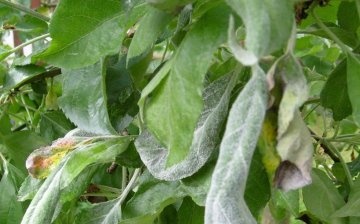
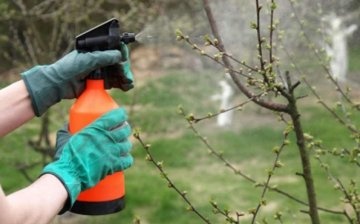
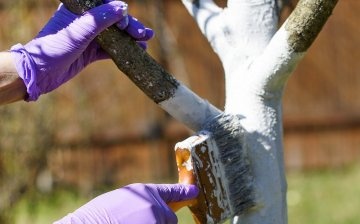





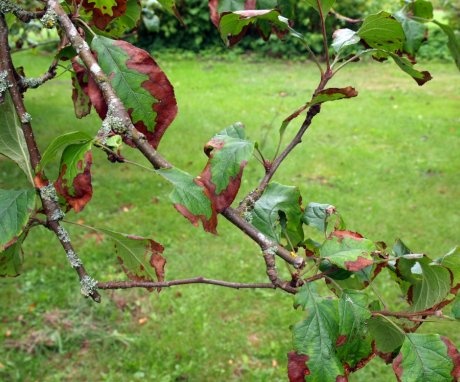
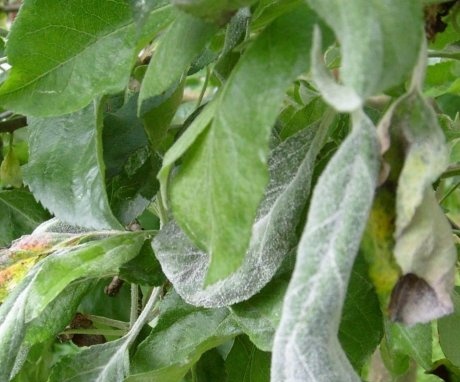

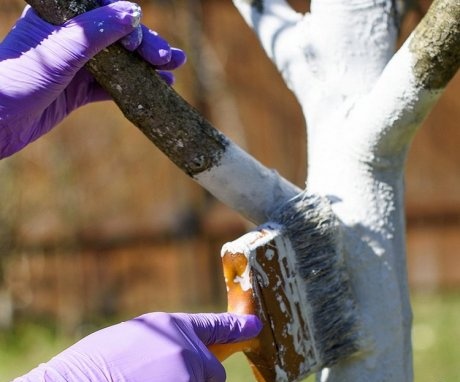
I divide diseases into those that can be eliminated on their own, and those that can only be corrected by a specialist. So it is better not to allow the disease, but to carry out preventive measures in the garden.